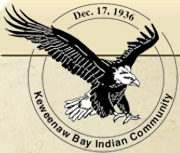The Council for the Conservation of Migratory Birds (Council) was established in 2009 by the Secretary of the Interior to oversee the implementation of the Executive Order 13186, Responsibilities of Federal Agencies to Protect Migratory Birds. The Executive Order was a crucial first step in creating a more comprehensive strategy for the conservation of migratory birds by the Federal government, thereby fulfilling the government’s duty to lead in the protection of this international resource. The Council serves to enhance coordination and communication among Federal agencies regarding their responsibilities under the four bilateral treaties on the conservation of migratory birds (Canada - 1916, Mexico - 1936, Japan - 1972, Russia - 1978) and also builds upon the progress that has been made in recent years on conservation of migratory birds.
To learn more about the Executive Order see the Q&A sheet.
Participation in the Council is open to all Federal agencies whose activities may directly or indirectly affect migratory bird populations. Federal Agencies are not required to have a completed Memorandum of Understanding with the U.S. Fish and Wildlife Service (Service) to become a member of the Council. The Director of the Service serves as Chair of the Council. Over twenty federal agencies currently participate in and have representation on the Council for the Conservation of Migratory Birds.
The Goals of the Council are to:
- promote coordination and collaboration of migratory bird conservation amongst the Federal agencies whose actions may affect migratory bird populations.
- improve opportunities for Federal activities to more effectively protect and conserve migratory birds and recognize positive impacts Federal agencies are having on migratory bird populations.
- ensure that each representative agency to which the Executive Order is applicable successfully implements its migratory bird conservation responsibilities, as described in its respective Memorandum of Understanding (MOU) developed with the Service in accordance with the Executive Order.
The Objectives of the Council are to:
- foster partnerships between other Federal and State agencies, tribes, and non-governmental entities to further the goals of the Executive Order.
- increase migratory bird conservation both nationally and internationally through the actions of Federal agencies.
- share the latest resource information to assist in the conservation and management of migratory birds.
- develop an annual report of accomplishments and recommendations related to the Executive Order and implementation of Federal agency MOUs.
- select an annual recipient of a Presidential Migratory Bird Federal Stewardship Award for contributions to the protection of migratory birds.
National FWS Programs They Work With
Related Stories
Partner Category
Partnership Services
Through our partnerships we are able to expand our capabilities through the inclusion of services in areas such as:
- Grant opportunities
- Sponsorship of grants
- Cooperative Agreements
To find out more about how our partner provides services view our partner services below.




